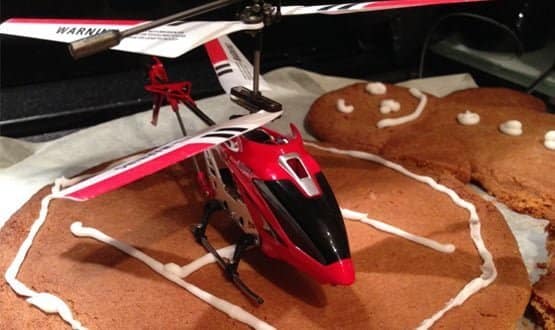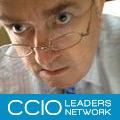Joe’s view: of powering up competition
- 11 December 2014

It started in a small way. Every year, we’d visit our old friends’ house in the run up to Christmas and my family would gently mock their Christmas tree for being inferior (in every conceivable way) to ours.
Ours is always magnificent in a store-bought way; whereas Phil and Tess’s is usually more rustic and home-spun.
So when we arrived I was surprised to see that their tree was considerably bigger and more polished than in previous years. It might have been attributable to Phil being stuck at home with a football injury in the run up to Christmas.
Even so, it was a worrying development. So, I greeted it with casual derision, as our tradition demanded. “Scabby tree Phil; was it the only one they had left?”
Go train, go cable car
On returning home, we held a family meeting and decided our tree needed a bit of an upgrade. After searching the internet we found, purchased, and installed a tiny cheap train set which ran through the branches of our tree.
A triumph. We filmed it, uploaded it to social media, and shared it with our friends with considerable festive-tongue-in-cheek gloating.
This fired an invisible starting gun. Within days, our friends responded by installing a fully operational toy cable car to trump our train set. This they too filmed, uploaded, and gloated over.
A full on, social-media-televised Christmas tree competition was now in full swing. A further council of war followed, and we responded by adding stained glass ginger bread tree decorations.
Phil responded with a Hollywood style movie trailer of his Christmas tree, using iMovie on his iphone.
We responded by hooking up our tree to the internet, so that it could be switched on and off remotely using an iPhone app.
All of this was played out in the glare of public attention from our friends and family – most of whom were considering the contest a draw.
A further meeting of our tree committee hatched a plan to fit it with a gingerbread helipad. This would support the landing of a tiny, remote-control helicopter which would, in turn, star in an action packed ‘Christmas Tree – The Movie’.
The film would be published on Christmas Eve, leaving our rivals no time to respond. The helipad was baked and landings were practiced.
Filming was due to begin when I met Phil in the High Street. He had a twinkle in his eye. So did I. Realising that we both had further plans, in the spirit of Christmas, I told him of our gingerbread helipad.
We agreed to call the competition off so that we could just get on and enjoy Christmas. I informed the tree committee on my return home that the competition was suspended and the helipad project was pulled. However, this Christmas…
Open competition drives innovation
There is nothing quite like competition to drive a project forward. And the more open that competition, the hotter it is. We went from scabby tree to internet connected gingerbread helipad tree in just a few days; our rivalry intensified by the audience.
Some industries embrace competition and there are channels that make the public scrutiny products intense.
I was flabbergasted by the frankness of a recent edition of Which? magazine that reviewed fridges. The one with the best review bore a sticker saying “buy” and the one with the worst review was labeled “don’t buy”.
Wouldn’t it be lovely if the health IT market was similarly open and transparent? Which? obviously includes information on price, which is often obscure in health IT.
We in the CCIO Leaders Network dream of a day when the cost per patient per year of an electronic patient record can be displayed alongside the name of an EPR provider.
Kia, the car manufacturer, is obviously confident of the quality of its product. It undertook to allow people to publish unfiltered reviews of its care cars; 10,000 reviews and a memorable ad campaign followed.
We in the CCIO Leaders Network dream of reading unfiltered reviews of EPR systems to inform our purchasing decisions in the future.
Look out for the National System Usability Survey
Mental health did experiment with a System Usability Survey last year. We found that it had good face validity.
We also learned that it doesn’t just measure the system deployed, but also the quality of training, hardware and implementation.
So the results have to be interpreted with care. However, it was still clear that systems are not as usable as we would like.
Without open competition, usability is unlikely to progress as quickly as the gingerbread helipad; or, for that matter, the death rates of cardiac surgery (which have been published for many years, even as other surgeons continue to complain about their inclusion on MyNHS).
We therefore intend to launch a National System Usability Survey across the NHS to encourage improvement as quickly as possible.
A system usability survey works best when it is done in massive numbers, and those massive numbers are generated when trusts embrace the process – for example by sending it to system users by internal trust email.
However, we can do it simply by using our own networks. The CCIO Leaders Network has received support from NHS England for the first time this year, so we will use some of that support to deliver the first National System Usability Survey to network members.
Those organisations that embrace the survey will get the most out of it. As CCIO Leaders Network member Dr Marcus Baw told a packed house at the recent Open Source Open Day in Newcastle: ”You wouldn’t prescribe medication that wasn’t peer reviewed, so why would you use clinical software that wasn’t peer reviewed?”
Merry Christmas and an open and transparent New Year to you all.


Joe McDonald
Joe McDonald is a practising NHS consultant psychiatrist. Over the past five years he has been an NHS trust medical director and national clinical lead for IT at NHS Connecting for Health – a stint that included 18 months as medical director of the Lorenzo delivery team!
His experiences in the National Programme for IT in the NHS have left him with a passion for usability and "end user knowledge networks.” He is the founding chairman of the National Mental Health Informatics Network. Motto: we don't get fooled again. Follow him on twitter @CompareSoftware




